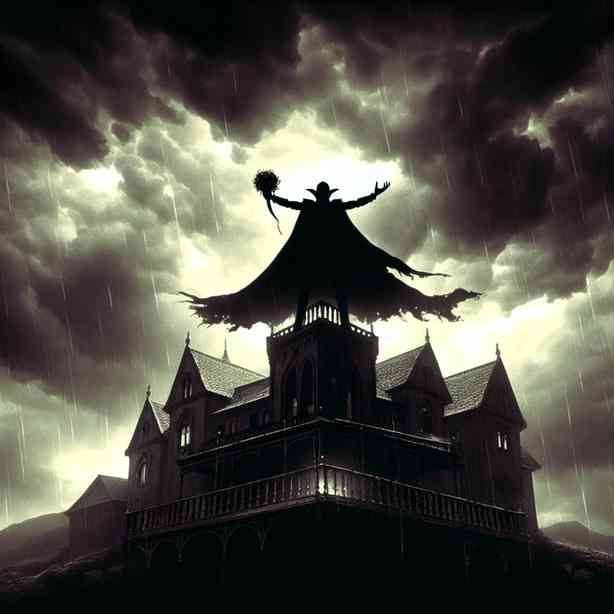
Villains in fiction often serve as the moral antithesis to heroes, acting as obstacles that the protagonists must overcome. However, a closer examination of many characters traditionally labeled as “villains” reveals complex motivations and justifications for their actions. Some of these figures were never truly wrong in their beliefs or goals, even if their methods were questionable or led to tragic outcomes. This exploration delves into several characters from literature, film, and pop culture who, in one way or another, evoke sympathy or understanding, revealing that their villainy was often a result of circumstances beyond their control or deeply rooted principles.
Starting with the classical literature, one can hardly mention troubled figures without considering the character of Victor Frankenstein in Mary Shelley’s “Frankenstein.” On the surface, Shelley’s novel presents Frankenstein as a mad scientist who plays god, but if we dig deeper, we uncover the motivations behind his actions. Victor’s quest for knowledge and the relentless pursuit of scientific advancement stem from a desire to transcend human limitations. Although he creates a creature without considering the consequences, leading to tragic results, his intentions were based on a thirst for enlightenment. His eventual regret and realization of the creature’s loneliness showcase a profound critique of societal rejection and the consequences of ambition. Thus, while he may be viewed through a villainous lens, his core desire to push boundaries for the greater good is strikingly relatable.
Another intriguing character that embodies the idea of a misunderstood villain is Magneto from the “X-Men” series. As someone who has experienced the atrocities of the Holocaust, Magneto’s motivations are rooted in a traumatic past that shapes his worldview. His extreme measures to protect mutantkind often put him at odds with the X-Men, who advocate for peaceful coexistence between humans and mutants. However, Magneto’s perspective is that of survival. His fierce approach arises from a genuine desire to protect his people, shaped by a history of persecution and discrimination. While his methods may lead him down a dark path of terrorism and violence, his underlying truth resonates with anyone who has experienced loss due to prejudice. Magneto’s narrative invites audiences to consider the effects of trauma and the lengths one may go to in order to safeguard one’s community, prompting a deep reflection on morality and justice.
Shifting focus to modern villainy, let’s examine Thanos from the Marvel Cinematic Universe. Thanos’ infamous quest to acquire the Infinity Stones and ultimately eradicate half of all life in the universe highlights a radical, albeit utilitarian, philosophy. His belief in overpopulation as a source of suffering leads him to undertake drastic actions, suggesting that his intentions, though horrific, are based on a desire to restore balance. From his viewpoint, he believes that his actions can ensure a better future for the remaining life. The ethical dilemma surrounding Thanos propels conversations about sacrifice, consequences, and the greater good. While his methods are undeniably violent, they spark discussions about the dire need for sustainable solutions in a world facing resource depletion and ecological crises. Thus, Thanos represents a polarizing figure whose extreme ideology provokes contemplation on existential threats, not unlike discussions currently facing society.
In the realm of animated features, we see another nuanced portrayal of villainy in Scar from Disney’s “The Lion King.” While his actions are driven largely by jealousy and ambition, Scar’s struggle reflects familial betrayal and the desire for acknowledgment. Raised in the shadow of his brother Mufasa, Scar’s feelings of inadequacy and resentment fester, leading him to commit horrendous acts to claim his rightful place as king. While his violent pursuit of power cannot be justified, his storyline provokes empathy by illustrating the complex emotional landscape of familial relationships and the destructive nature of jealousy. Scar’s journey prompts viewers to consider how feelings of neglect and inferiority can warp one’s sense of self and morality, making him a figure that, while villainous, evokes understanding.
Yet another remarkable character, often overlooked, is Ozymandias from Alan Moore’s graphic novel “Watchmen.” Ozymandias, a former superhero turned anti-hero, devises a plan to unite humanity by staging a catastrophic event that results in numerous deaths to prevent greater conflict. His belief is grounded in calculating logic: to save billions, one must be willing to sacrifice a few. The ethical implications of his decision resonate with debates on the greater good and moral justification. While his actions are undoubtedly malevolent, his motivations aim toward a peaceful coexistence, challenging audiences to grapple with the paradoxes of power, sacrifice, and morality. Ozymandias illustrates that, at times, what appears villainous can stem from a desire to prevent greater suffering.
Venturing into the realm of classic literature, we encounter Iago from Shakespeare’s “Othello.” Although Iago’s machinations lead to catastrophic outcomes, his motivations drive from being overlooked and feeling betrayed by those he trusted. His cunning manipulation reflects deep-seated insecurities stemming from a desire for power and recognition. While his actions are morally reprehensible, Iago’s cunning exhibits how personal grievances and envy can twist one’s character, leading to tragic consequences not only for himself but for everyone around him. Iago serves as a poignant reminder of the dark side of human emotion and the potential for betrayal, painting a complex portrait of villainy that is deeply rooted in personal pain.
The exploration of villainous characters would be incomplete without acknowledging the deeply profound reasoning behind Ra’s al Ghul from the Batman series. Ra’s al Ghul views himself as a savior, believing that by eradicating a portion of humanity, he is allowing the world to rejuvenate and thrive. His commitment to ecological balance and conservation could paint him as an extremist environmentalist, as his methods include mass destruction. Through this lens, Ra’s ultimately reveals himself as a complex character caught between a prophetic vision for a healthier planet and the moral implications of his approach. As he represents a radical solution to persistent issues, audiences are encouraged to reflect on the evolving nature of villains – those who, in their pursuits, tread the fine line between justification and cruelty.
As we analyze these various characters, it becomes increasingly evident that the motivational complexity behind villainous actions often stems from personal experiences, struggle against societal norms, and a fervent belief in their ideologies. The differentiation between heroes and villains is seldom clear-cut, revealing that the ‘villain’ label can sometimes obscure the nobility of intent masked by destructive actions. These characters often serve as mirrors reflecting society’s flaws, prejudices, and moral dilemmas, compelling audiences to confront their values and biases.
When examining villainy, it is essential to approach characters with empathy and critical thinking. The blurred lines between good and evil challenge audiences to broaden their perspectives on morality. Recognizing the shades of gray in characters’ motivations can lead to a deeper understanding of human psychology, societal constructs, and the intricate narratives of life itself. Villains who were never really wrong challenge us to reconsider our own beliefs and the reasons we might judge others, reminding us that behind every dark deed lies a story waiting to be understood.
In conclusion, the exploration of these complex villains encourages thoughtful dialogue about morality, empathy, and the line between right and wrong. Their actions may have led to tragedy, but delving into their motivations offers insights worthy of reflection. Understanding these characters not only enriches our appreciation of their narratives but also prompts us to consider the structural realities that create conflict within our own society. Through their stories, we are invited to confront the vast complexities of human nature, instilling a greater capacity for empathy in a world increasingly defined by polarization. The tales of these ‘villains’ remind us that every action has a reason, and even those who have strayed from the path can sometimes be reflections of deeper truths about ourselves and the world around us.


